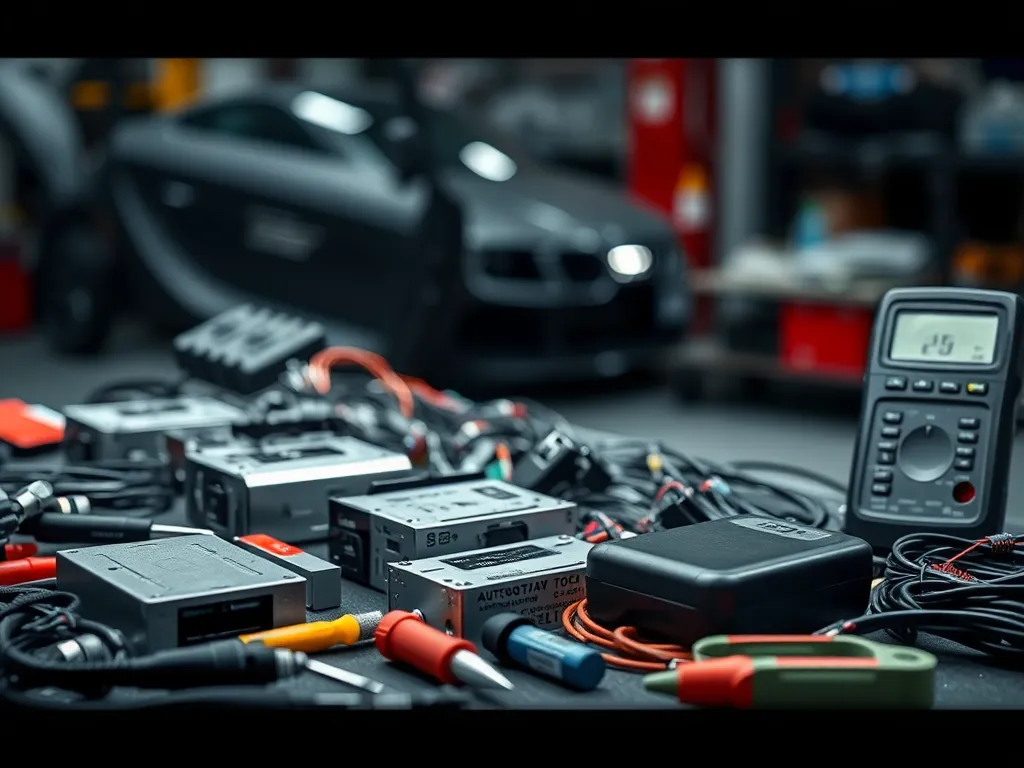Easy Guide to Automatic Car Door Lock Installation

Automatic Car Door Lock Installation
Automatic Car Door Lock Installation is an essential upgrade for vehicle owners looking to enhance convenience and security. This article delves into the benefits, tools, and processes involved in installing automatic car door locks, catering to both DIY enthusiasts and those seeking professional assistance.
The process of Automatic Car Door Lock Installation not only improves the overall safety and functionality of your vehicle but also adds a layer of modern technology that can appeal to a wider audience. Whether you're considering an upgrade for your existing locks or need to replace old and malfunctioning systems, understanding the installation process is crucial.
This article provides detailed guidance on the advantages of automatic door locks, the tools required for installation, and a step-by-step DIY installation process. Additionally, we will cover troubleshooting common issues that may arise, as well as a comparison of different automatic locking systems available on the market.
By the end of this article, readers will have a better understanding of automatic car door lock installation and be empowered to make informed decisions about upgrading their vehicle's locking systems. So, let's dive into the world of automatic car door locks and how they can enhance your driving experience.
For a seamless experience in securing your vehicle, consider the convenience of automatic car door lock systems that enhance both safety and ease of access.
Improving vehicle security and convenience has never been easier with automatic car door locks, and this comprehensive guide will help you navigate through the installation process effectively.
Benefits of Automatic Car Door Locks
One of the primary benefits of automatic car door locks is the increased safety features they provide. Automatic locks ensure that doors lock when the vehicle is in motion or when the driver engages the locking mechanism, minimizing the risk of unauthorized access and enhancing overall vehicle security.
For those looking to enhance their vehicle's security, professional car lock installation can provide peace of mind and convenience.
Convenience is another significant advantage of automatic locking systems. With features like remote locking and keyless entry, drivers no longer need to fumble for keys or manually lock and unlock doors, making it easier to access the vehicle and enhance user experience, especially when carrying items.
Additionally, installing automatic door locks can lead to cost savings on insurance premiums. Insurance providers often offer discounts for vehicles equipped with advanced security features, including automatic locks, which not only offer protection but can also reduce yearly costs for car owners.
Furthermore, automatic door locks can enhance the overall value of your vehicle. Upgrading to a modern locking system can make your vehicle more attractive to potential buyers, showcasing that it is equipped with the latest safety and convenience features.
Tools Required for Installation
Before you embark on the Automatic Car Door Lock Installation process, it's essential to have the right tools at your disposal. The basic tools you will need include screwdrivers, pliers, wire cutters, and a torque wrench. Additionally, having electrical tape and zip ties can aid in securing connections during installation.
For a faster and more efficient installation, it is recommended to have power tools such as an electric drill or a ratchet set. These power tools can greatly reduce the time and effort needed to complete the installation process, especially when dealing with stubborn screws or bolts.
Safety gear should also be prioritized during the installation process. This may include gloves to protect your hands, safety goggles to shield your eyes, and a mask if you are working with any corrosive materials or dust. Ensuring personal safety should be a top priority while performing any car maintenance task.
Optional tools that can benefit a professional-grade installation include a multimeter for testing electrical connections, a soldering iron for making secure wire connections, and a wiring harness to simplify the installation process. These tools can enhance the quality and durability of your automatic lock system installation.
DIY Installation Process
The DIY installation process for automatic car door locks can be broken down into clear steps. First, gather all the necessary tools and materials. Next, disconnect the vehicle battery to ensure safety while working with the electronic components. Then, remove the door panels to access the existing locking mechanisms and wiring.
As you install the new automatic locking system, it's crucial to avoid common mistakes such as improper wiring, which can lead to malfunction, or failing to securely fasten the locks within the door. Always double-check connections and ensure that all components are fitted correctly before reassembling the door panels.
After installation, testing functionality is crucial to ensure that the locks operate correctly. Reconnect the vehicle battery and test the locks using the key fob or manual switch. Pay attention to any unusual sounds or movements that might indicate issues with the installation.
Regular maintenance tips for automatic door locks include lubricating moving parts, regularly checking battery health, and periodically assessing electronic connections for wear and tear. This can help prolong the life of your automatic locking system and maintain functionality.
Troubleshooting Common Issues
Identifying and fixing faulty connections is a common troubleshooting step when dealing with automatic car door locks. If the locks are not working as expected, check each connection to ensure that wires are securely attached and that there are no signs of corrosion or damage.
Dealing with malfunctioning key fobs can also pose a challenge. If your key fob is unresponsive, replace the batteries and ensure that it is properly programmed to the vehicle's locking system. Consulting the vehicle's manual can provide specific instructions on how to reprogram the key fob.
Resolving battery issues in automatic locks is another common concern. Check the battery powering the locks to ensure it’s sufficiently charged. If you notice recurring battery problems, there could be an issue with the wiring or the locking system itself that requires further inspection.
In instances where the above troubleshooting steps do not resolve the issue, it may be time to seek professional help for installations. Experienced technicians can diagnose more complex problems that may be difficult for a DIY enthusiast to troubleshoot effectively.
Comparing Different Lock Systems
When exploring locking systems for your vehicle, it’s crucial to understand the various automatic locking systems available. These range from simple central locking systems to advanced smart locking features that integrate with mobile apps for remote access.
Keyless entry systems present a modern convenience; however, they do come with limitations. While keyless entry offers quick access to your vehicle, it can also raise security concerns, as thieves can sometimes exploit keyless systems more easily than traditional keys.
Understanding remote locking features provides insight into the different ways drivers can interact with their vehicles. Some systems allow users to lock or unlock their doors from a distance, while others may also provide features like locating the vehicle in a crowded parking lot.
Future trends in automatic locking technology point towards greater integration with smart home systems, enhanced security measures with biometric access, and the development of more sophisticated remote keyless entry features. Keeping an eye on these advancements can help car owners stay ahead in vehicle security and convenience.
